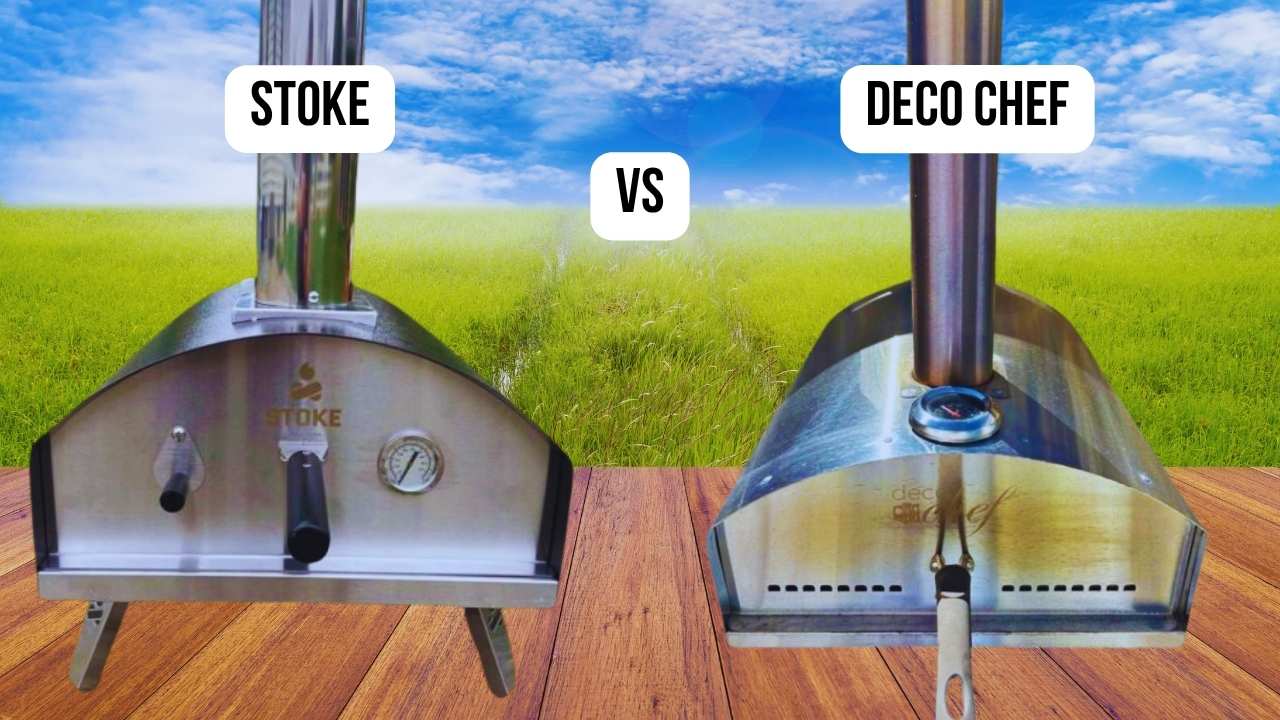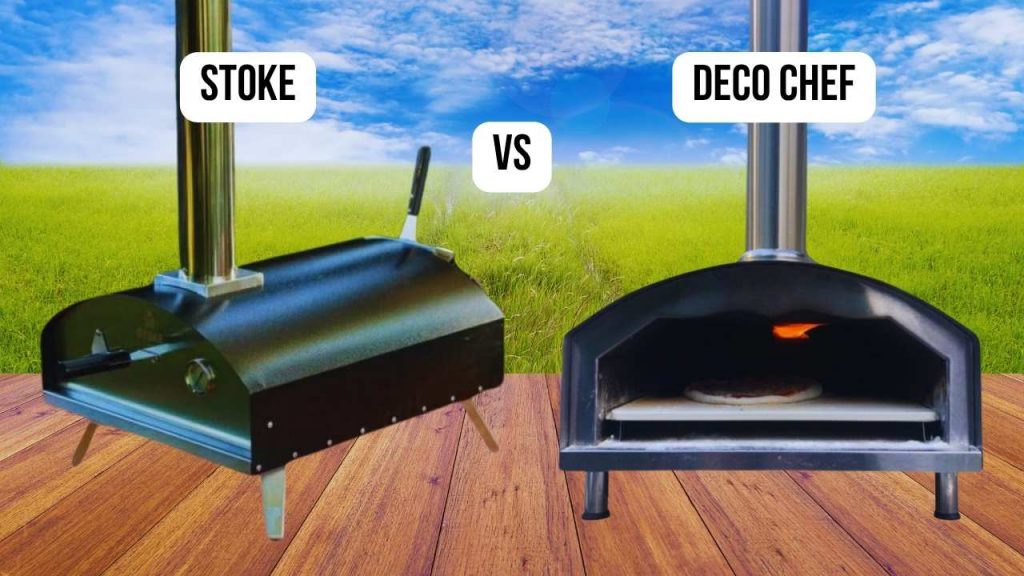As a restaurant chef with over 10 years of experience at Dequte Restaurant LironBoylston, I’ve had the chance to work with a wide range of pizza ovens in both professional and home settings. In this article, I’m comparing two ovens I personally used in my kitchen: the Stoke Wood-Fired Pizza Oven and the Deco Chef Outdoor Pizza Oven.
I’ve tested both ovens by evaluating their quality and materials, temperature control, shape, first-time usage impressions, power source, size, ease of cleaning, and most importantly, I conducted a real Margherita pizza cooking test to see how long it takes to heat up and cook—and how the final pizza tastes. If you’re curious about the full testing process I use, feel free to check out my separate article where I go into all the details.
The Stoke Wood-Fired Pizza Oven stands out for its traditional wood-fueled setup and a compact design that promises an authentic pizza experience.
The Deco Chef Pizza Oven, on the other hand, is a gas-powered model known for its ease of use, fast heat-up time, and beginner-friendly setup.
This article offers a comprehensive comparison of the Stoke and the Deco Chef, based on my own testing experience.
Please note: This article contains referral links, which help support this blog. If you decide to buy one of the ovens through my links, I may earn a small commission at no extra cost to you—and it goes a long way in keeping this site alive.
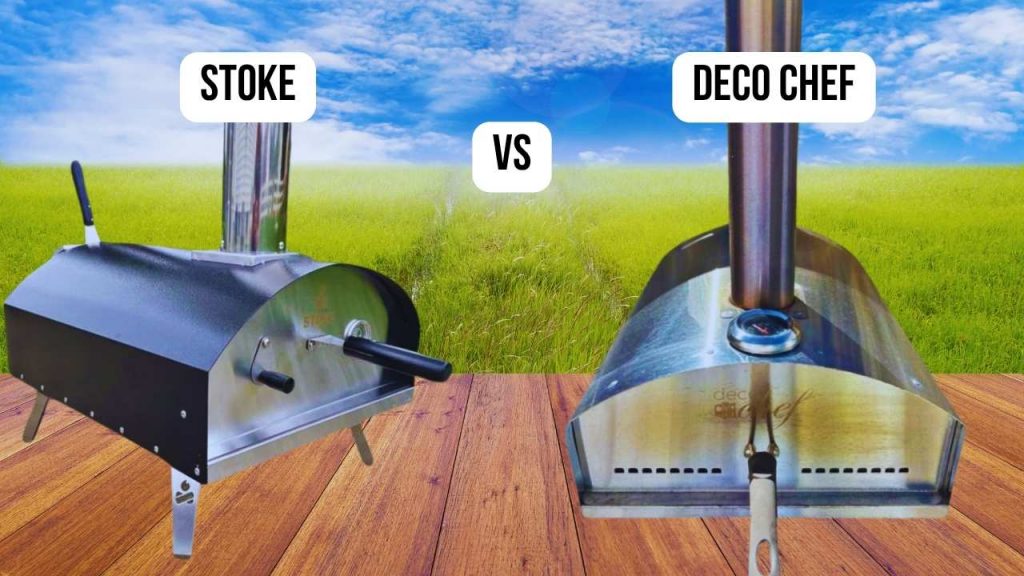
Stoke VS Deco Chef: Quality and Materials
| The Stoke Wood-Fired Pizza Oven features decent construction with solid parts, making it reliable for repeated use in a restaurant setting. It’s not luxury-grade but performs well under regular stress. |
The Deco Chef Pizza Oven is made from stainless steel and features triple insulation, but feels lighter and less heavy-duty compared to other ovens in the same range.
|
Stoke VS Deco Chef: Temperature Control
| The Stoke Wood-Fired Pizza Oven reached around 700ºF after 45 minutes and maintained a stable cooking temperature. |
The Deco Chef Pizza Oven claims to reach 950ºF, but in my experience, it usually hovered around 550–600ºF, requiring frequent pellet refills and careful attention.
|
Stoke VS Deco Chef: Shape
| The Stoke Wood-Fired Pizza Oven includes a tall flame barrier that acts as a buffer, encouraging even heat dispersion but slightly slowing temperature rise. |
The Deco Chef Pizza Oven has a classic half-circle shape that works well for small pizzas but occasionally causes uneven heating, especially on the crust.
|
Stoke VS Deco Chef: First-Time Usage Impressions
| My first cook with the Stoke Wood-Fired Pizza Oven was straightforward. It assembled in 10 minutes and delivered a nicely charred top, though the bottom needed longer exposure. |
The Deco Chef Pizza Oven also offered easy setup, but maintaining consistent heat took some practice, especially with pellet feeding during windy conditions.
|
Stoke VS Deco Chef: Power Source
| The Stoke Wood-Fired Pizza Oven supports both wood and gas models. I tested the wood-fired version, which produced excellent smoky flavor. |
The Deco Chef Pizza Oven runs exclusively on hardwood pellets. While convenient, it required frequent refueling and monitoring to keep flames steady.
|
Stoke VS Deco Chef: Size
| The Stoke Wood-Fired Pizza Oven is lightweight (~40 lbs) and compact, making it easy to move and store after use. |
The Deco Chef Pizza Oven is taller and slightly bulkier despite having a similar cooking area, making it less convenient for small spaces or travel.
|
Stoke VS Deco Chef: Ease of Cleaning
| The Stoke Wood-Fired Pizza Oven was easy to disassemble and clean after cooling. Minimal effort needed post-cook. |
The Deco Chef Pizza Oven also offers quick cleanup, though the pellet tray and ash box need more frequent maintenance.
|
Pizza Cooking Test: Stoke vs. Deco Chef
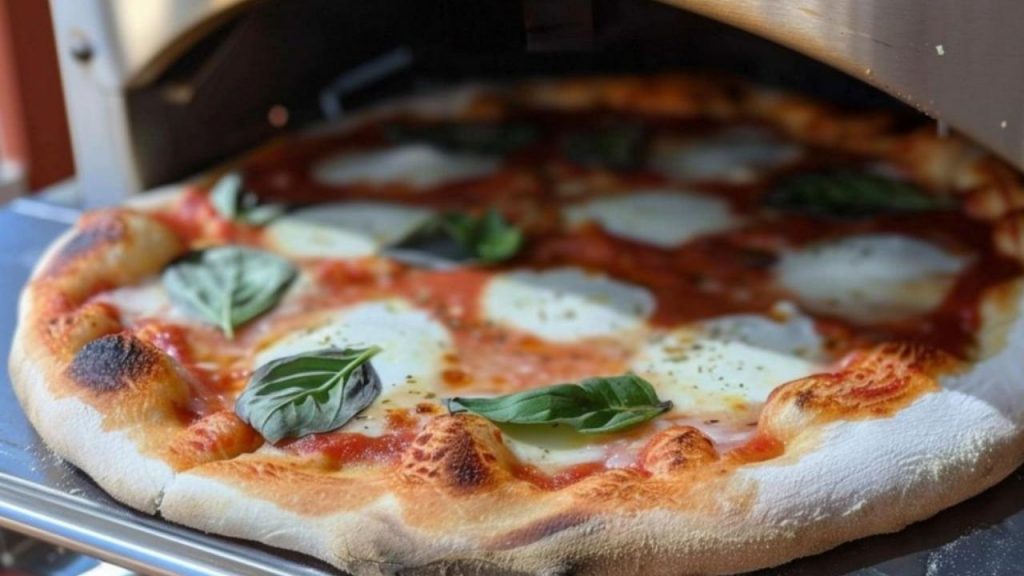
To fairly evaluate both the Stoke Wood-Fired Pizza Oven and the Deco Chef Pizza Oven, I tested them under similar outdoor conditions using a classic Margherita pizza recipe—fresh dough, San Marzano tomato sauce, mozzarella, and basil.
Stoke Wood-Fired Pizza Oven took approximately 45 minutes to reach its peak temperature of around 700ºF. Once hot, it cooked my Margherita pizza in just over 2 minutes. The top was beautifully charred with that signature wood-fired flavor, and the crust had a nice balance of crispness and chew. However, the bottom needed a bit more rotation during cooking to avoid soft spots. The smokiness from the wood fire gave the pizza a restaurant-quality aroma that reminded me of traditional Neapolitan ovens.
Deco Chef Pizza Oven heated up quicker—around 20 minutes to reach its claimed 950ºF, though in practice, I noticed a working temperature closer to 600ºF. It cooked the Margherita in about 90 seconds, and while the top looked great, the base came out a bit soft and slightly undercooked in the center. The flavor was still good, thanks to the wood pellet fuel, but the heat consistency made a noticeable difference in texture.
In short: both ovens delivered tasty results, but the Stoke Pizza Oven provided a slightly more authentic and satisfying wood-fired taste and texture, especially after a longer warm-up.
How We Tested
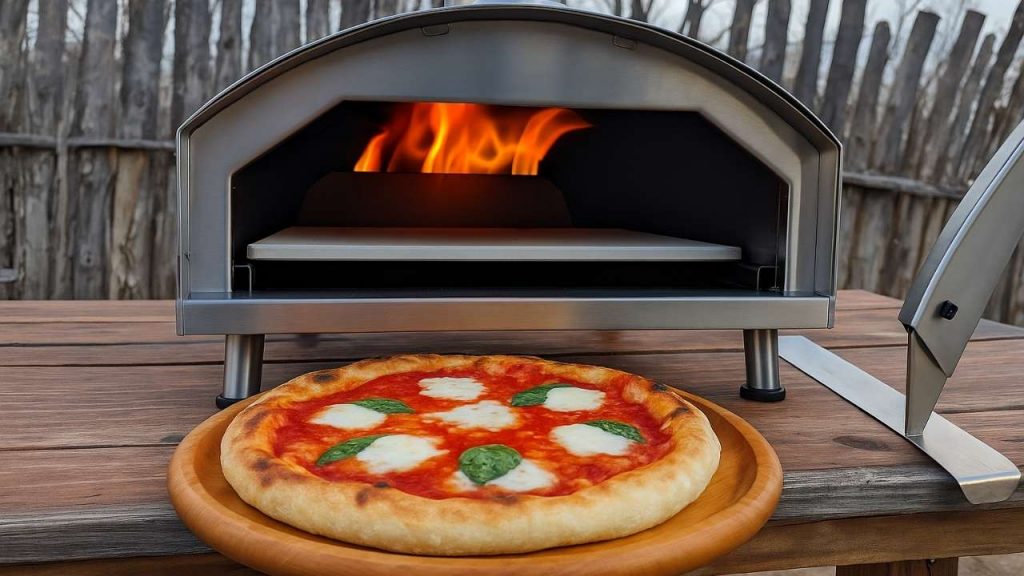
As a restaurant chef with over 10 years of experience at Dequte Restaurant LironBoylston, I rely on more than just specs—I need real-world performance. To compare the Stoke Wood-Fired Pizza Oven and the Deco Chef Pizza Oven, I set them up side-by-side in my outdoor kitchen under similar weather conditions.
For both ovens, I used the same fresh pizza dough, tomato sauce, mozzarella, and fresh basil to create a classic Margherita. I monitored preheat time, internal temperature, and cooking consistency using an infrared thermometer and a timer.
I evaluated how evenly each oven distributed heat, how the crust and toppings cooked, and whether the ovens delivered on their advertised performance. I also took into account ease of setup, fuel efficiency, how the materials held up during use, and how long each unit took to recover heat between pizzas.
If you’re curious about the full step-by-step process I use to test pizza ovens, you can check out my separate article detailing it.
Conclusion
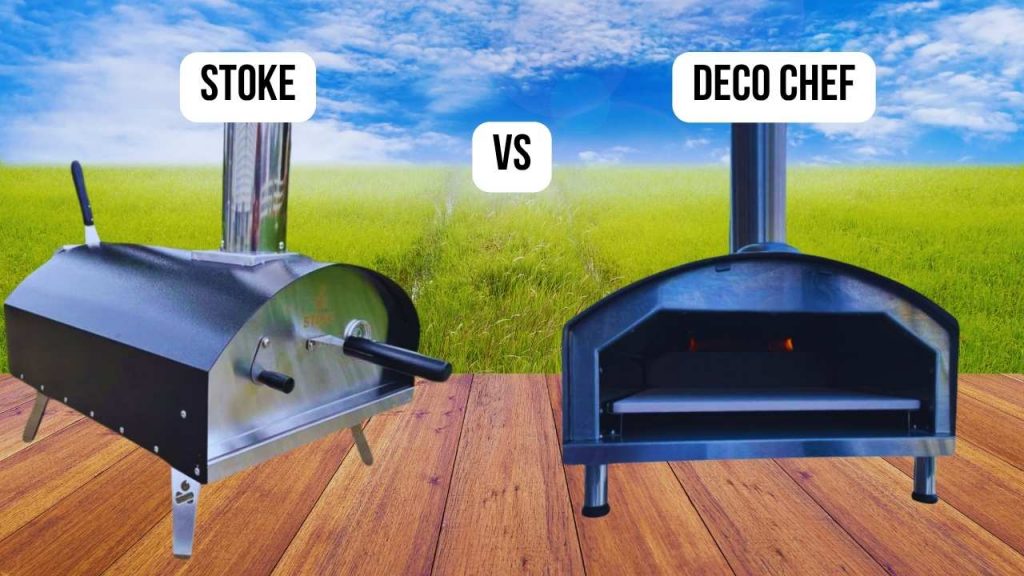
At the end of the day, it’s your choice whether the Stoke Wood-Fired Pizza Oven or the Deco Chef Pizza Oven better fits your cooking style and needs. Both ovens have their strengths, and either can deliver great results with a bit of practice. If you decide to purchase one, I’d really appreciate it if you used my referral links—it won’t cost you anything extra, but it helps support my blog and allows me to keep testing and reviewing more ovens for you. Here’s the link for the Stoke Pizza Oven, and here’s the one for the Deco Chef Pizza Oven. Thanks for your support and happy pizza making!
Don’t forget to check out the best pizza ovens list.

